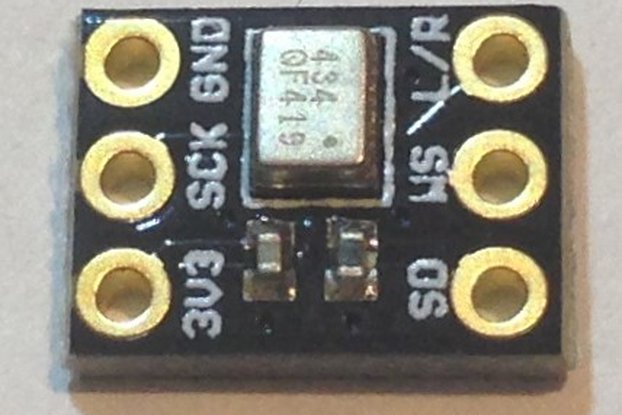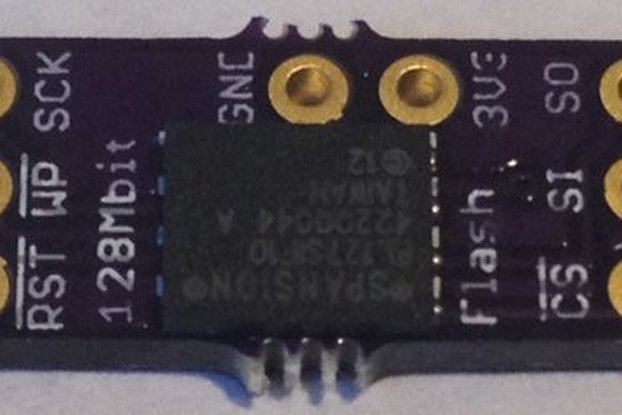Measure range out to 200cm with high accuracy independent of reflectivity!
Designed by Pesky Products in United States of America
This product is no longer available for sale.
The seller may be offering an improved version or it may be hanging out on the beach, enjoying the retired life.
What is it? This is a small (18 x 8 mm) breakout board for ST Microelectronics' latest VL53L0X proximity sensor. The sensor is the successor to the VL6180X ambient light and proximity sensor. The VL5…
Read More…This is a small (18 x 8 mm) breakout board for ST Microelectronics' latest VL53L0X proximity sensor. The sensor is the successor to the VL6180X ambient light and proximity sensor. The VL53L0X offers ranging only, but extends the range of accurate distance detection out to 2 meters. And because the patented ranging technology uses time-of-flight from a 940 nm laser, the range estimation is independent of surface reflectivity. This means higher accuracy in any weather or environmental conditions compared to ranging technologies that depend on changing reflectance to estimate range.
From the data sheet: "The VL53L0X is a new generation Time-of-Flight (ToF) laser-ranging module housed in the smallest package on the market today, providing accurate distance measurement whatever the target reflectances unlike conventional technologies. It can measure absolute distances up to 2m, setting a new benchmark in ranging performance levels, opening the door to various new applications.
The VL53L0X integrates a leading-edge SPAD array (Single Photon Avalanche Diodes) and embeds ST’s second generation FlightSenseTM patented technology. The VL53L0X’s 940nm VCSEL emitter (Vertical Cavity Surface-Emitting Laser), is totally invisible to the human eye, coupled with internal physical infrared filters, it enables longer ranging distance, higher immunity to ambient light and better robustness to cover-glass optical cross-talk."
Here the VL53L0X is broken out onto a super small board intended to be mounted directly onto an MCU like a Teensy 3.2 or Dragonfly. Because the VL53L0X is such a low power sensor, it can be powered from 3.3 V via a digitalWrite(HIGH) from any digital GPIO. Or use it on the breadboard, but 3.3 V only; the VL53L0X is not 5 V tolerant!
Unlike the VL6180X, the VL53L0X input voltage range spans from 2.6 to 3.5 v, so standard 3.3 V sources can be used to power the sensor without the on-board 2.8 V LDO voltage regulator that is required for the VL6180X sensor. Hence, the price of the VL53L0X breakout board is a little less than that of the VL6180X. Of course, there is no ambient light sensor embedded in the VL53L0X either.
Lastly, the VL53L0X comes with a protective Kapton film that should be gently removed with non-metallic tweezers before being put into your application.
I like sensors, new and small and I can't resist trying out the latest and greatest.
But there is a practical reason as well. For flying or rolling robots there is a real need for small, accurate proximity sensing for collision avoidance, near-field object range detection, gesture recognition, and altitude hold. At 2 meters, the VL53L0x opens a wide range (pun intended) of applications in a super small, low-power package that can easily be incorporated into very small robots.
This breakout board is small and simple to use. It breaks out SDA/SCL, 3V3 and GND, an active LOW shutdown pin (pulled HIGH) and an interrupt for the host. It has everything you need to incorporate this sensor in your project or on the breadboard for testing and application code development.
The only fly in the ointment is that ST expects customers to use their API and build application code on top of this. This is fine if you are a cellphone maker, the target market. But if you are a hacker, robot maker, or hobbyist, Arduino is what you'll likely be using and ST has so far refused to even provide the register map for this sensor. Never fear, their API has enough details to allow a basic Arduino sketch to be constructed; it provides distance in mm that seems accurate enough. Pololu has a nice Arduino version of the ST API here. Typical sample data rate using the interrupt for data ready is 30 Hz and the data seem accurate to 1 or 2 mm out to 2 meters. Pretty nice sensor!
Here is a version of ST's API made to run on the Raspberry Pi.
You can order the pcb directly from OSH Park if you want to save a little money and assemble your own. Or order the fully assembled and tested board from me and see what 2 meter ranging can do for your next robot project!
Product: (4.67)
Documentation: (3.67)
Shipping: (5.00)
Communication: (5.00)
Jesse | Nov. 11, 2018
Albertas | Aug. 8, 2016
Cassard | July 9, 2016
Danville, CA, United States of America
Ships from United States of America.
180 Reviews | 5,454 Orders

$49.95
Free Shipping!

$5.95
Free Shipping!

$35.95
Free Shipping!

$35.95
Free Shipping!

$49.95
Free Shipping!

$29.95
Free Shipping!

$19.95
Free Shipping!

$12.95
Free Shipping!
By clicking Register, you confirm that you accept our Terms & Conditions
We recognize our top users by making them a Tindarian. Tindarians have access to secret & unreleased features.
We look for the most active & best members of the Tindie community, and invite them to join. There isn't a selection process or form to fill out. The only way to become a Tindarian is by being a nice & active member of the Tindie community!
